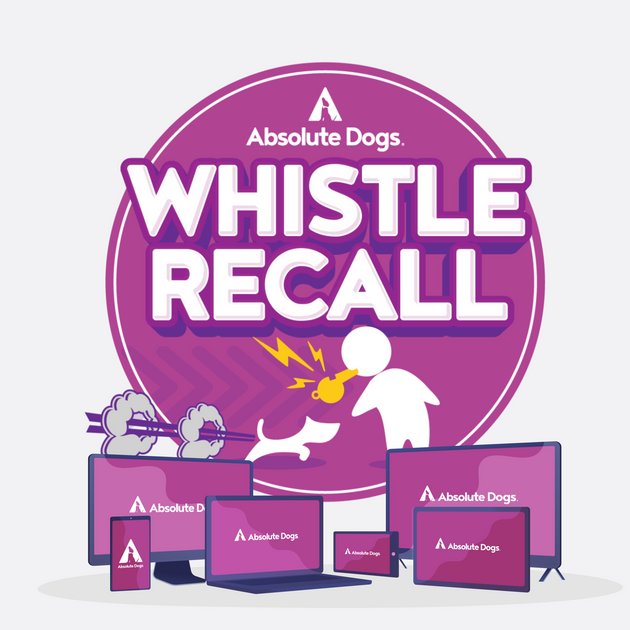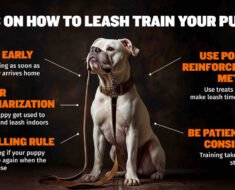Imagine this: your dog is off-leash, distracted, and suddenly calls your name. Will they come running back without hesitation?
Teaching a reliable emergency recall using a whistle can make all the difference in keeping your furry friend safe. You’ll discover simple, effective steps to train your dog to respond instantly to a whistle, no matter the distractions around. By the end, you’ll have a powerful tool to protect your pet and enjoy more freedom together.
Ready to master this essential skill? Let’s dive in.

Credit: www.speakingofdogs.com
Choosing The Right Whistle
There are different types of whistlesused for training dogs. Some are pea whistles, which have a small ball inside. These make a loud, sharp soundthat carries far. Others are pea-less whistles, which give a clear, consistent tonewithout moving parts. They are durable and easy to clean.
Choosing the right whistle depends on volume and tone. Volume needs to be loud enoughto hear from a distance but not scare the dog. The tone should be pleasant and easy to recognize. Dogs react better to higher-pitched sounds. Testing different whistles can help find the best fitfor your dog’s ears.
Preparing Your Dog For Recall Training
Start by teaching basic commandslike sit, stay, and come. Use short sessionsto keep your dog focused. Praise and treatshelp your dog learn faster. Consistency is key. Practice daily in quiet places first.
Next, create positive associationswith the whistle sound. Blow the whistle and immediately give a treat. Repeat this several times so your dog links the sound with good things. This builds trust and excitement.
Always use the same whistle tone and volume. Avoid using the whistle for anything negative. Keep training fun and calm. This way, your dog will want to come when they hear the whistle.
Introducing The Whistle Cue
Start by making the whistle soundclear and distinct. Use the whistle together with a simple verbal command, like “come” or “here.” Repeat this several times during short training sessions. This helps your dog connect the whistlewith the command.
Use treats and rewardsright after your dog responds to the whistle. This builds a positive linkbetween the sound and coming to you. Choose small, tasty treats your dog loves. Praise your dog with a happy voice to encourage good behavior.
Practice in a quiet place first. Then try in different places with more distractions. Keep sessions short and fun. Repeat often so your dog learns to trust the whistlecue for recall.

Credit: absolute-dogs.com
Practicing Recall In Controlled Settings
Start teaching recall in a quiet, safe room inside your home. Use a whistleto signal your dog. Blow the whistle clearly and call your dog’s name. When your dog comes, give a treat and praise. Repeat this several times until your dog understands.
Next, move to a fenced yard. This space adds distractions but keeps your dog safe. Use the whistle again and call your dog. Reward every time your dog responds fast. Keep sessions short and fun. Practice often to build strong habits.
Generalizing Recall Outdoors
Start training in a quiet place with few distractions. Slowly add noises like people talking or cars passing. This helps your dog focus on your whistle sound despite distractions.
Begin close to your dog. Call them with the whistle. Reward them each time they come. Gradually move farther away, increasing the distance little by little.
Keep sessions short and fun. If your dog gets distracted, reduce distance or distractions. Patience is key to building a strong recall.
Troubleshooting Common Issues
Ignoring the whistleoften happens when dogs do not connect the sound to a reward. Make sure to pair the whistle with treatsor praise every time you practice. Keep training sessions short and fun to hold your dog’s attention.
Delayed responsescan mean your dog is confused or distracted. Practice in quiet places first. Use a clear, consistent whistle sound. Reward quickly to teach your dog to come fast.
Overexcitement on recallcan cause dogs to run past you or bark loudly. Teach calm behavior by asking your dog to sit before giving the reward. Use a calm voice and gentle praise to keep your dog steady.
Maintaining Recall Reliability
Regular practice helps keep your dog’s recall strong and reliable. Short sessions every day work best. Change the place where you practice to keep your dog focused. Use the whistle in different spots like the park, backyard, or inside.
Rewards should vary to keep your dog interested. Sometimes use treats, other times praise or playtime. This makes your dog eager to respond every time. Practice in quiet and noisy places to help your dog listen well everywhere.

Credit: absolute-dogs.com
Frequently Asked Questions
What Is Emergency Recall Training With A Whistle?
Emergency recall training uses a whistle to get your dog’s immediate attention. It helps ensure they return quickly in urgent situations. This method is effective because the whistle sound carries far and is distinct from everyday commands.
How Do I Start Whistle Recall Training?
Begin by associating the whistle sound with positive rewards. Use short, clear whistle blasts and call your dog. Reward them immediately when they respond correctly. Practice in a distraction-free area before progressing to more challenging environments.
How Long Does It Take To Teach Whistle Recall?
Training duration varies but typically takes a few weeks. Consistent daily practice of 5-10 minutes accelerates learning. Patience and positive reinforcement are key to a reliable emergency recall response.
Can All Dogs Learn Whistle Recall?
Yes, most dogs can learn whistle recall regardless of breed or age. Some dogs may take longer based on temperament and past training. Consistent practice and positive motivation improve success rates.
Conclusion
Teaching your dog a whistle recall builds safety and trust. Practice often and keep sessions short. Use clear, consistent whistle sounds every time. Reward your dog with praise or treats quickly. Stay patient; learning takes time for both. A reliable recall helps you enjoy walks worry-free.
Your dog will learn to come back fast. Keep training fun and positive for best results.





